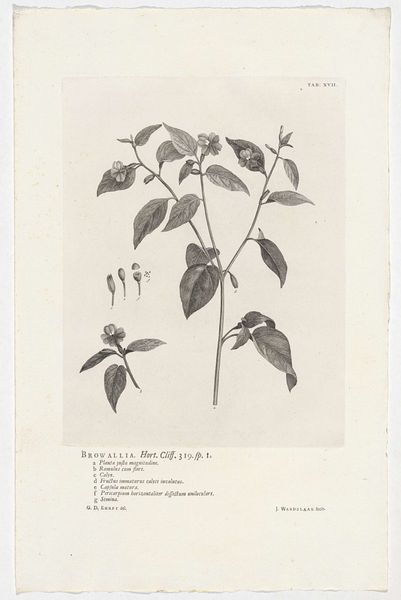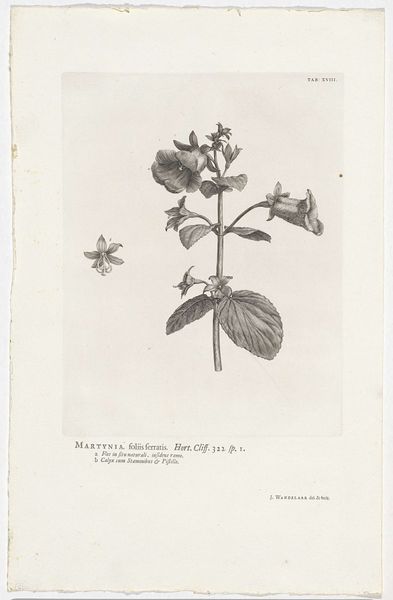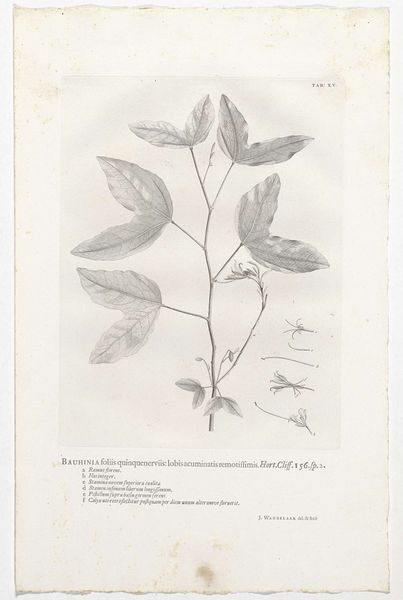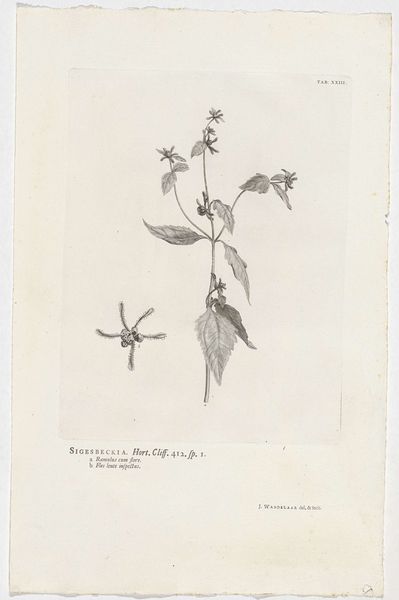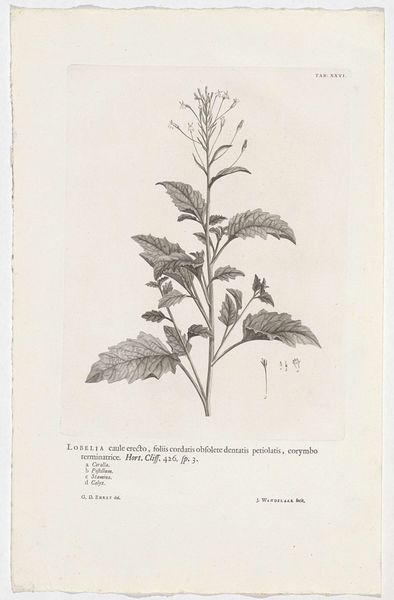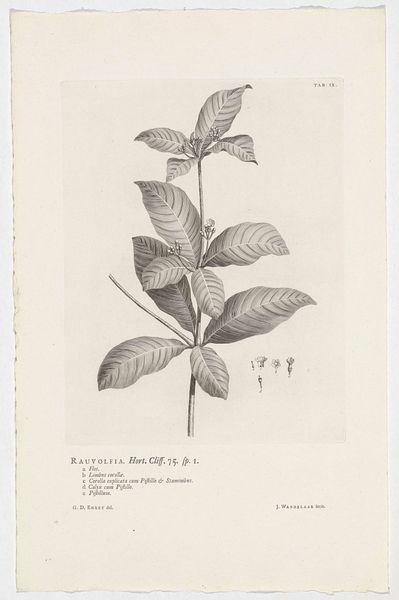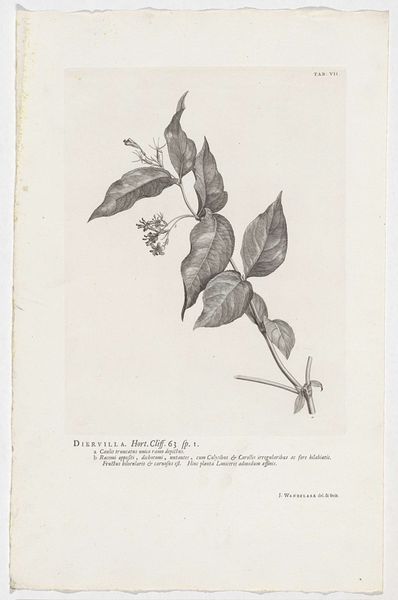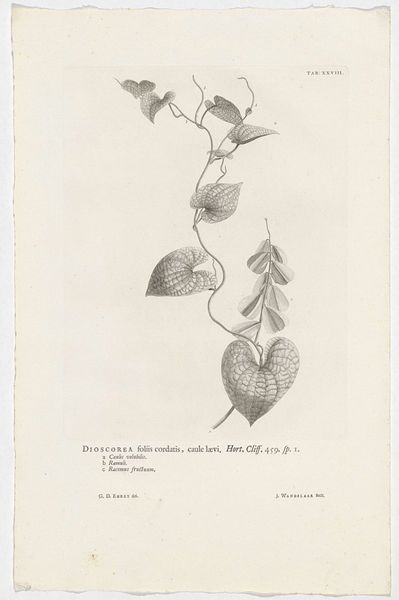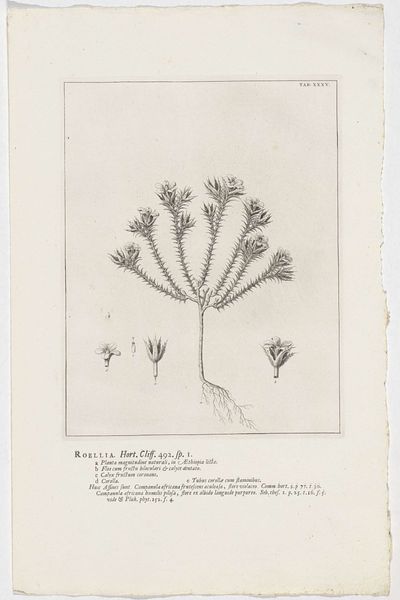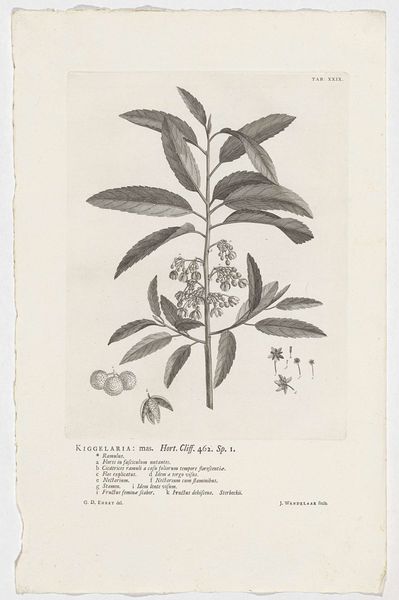
Dimensions: height 292 mm, width 223 mm
Copyright: Rijks Museum: Open Domain
Jan Wandelaar made this print of Elvira biflora, likely in the first half of the 18th century. It’s a botanical illustration, carefully rendered with the precision that scientists then required. The work is an engraving, a printmaking process that demands considerable skill. A metal plate, probably copper, would have been incised with lines, using a tool called a burin. Ink is then forced into these lines, the surface wiped clean, and the image transferred to paper under great pressure. Look closely, and you can see the crisp, clean lines produced by this method. Wandelaar used hatching and cross-hatching to create a sense of volume and shadow, giving the plant a lifelike presence. The paper itself also has character. It's handmade, with a slightly rough texture and deckle edge, a far cry from today's industrially produced stock. The print represents a fusion of art and science, where the hand-crafted process enhances our understanding of the natural world. It reminds us that even in the age of mechanical reproduction, human skill and attention to detail remain essential.
Comments
No comments
Be the first to comment and join the conversation on the ultimate creative platform.
